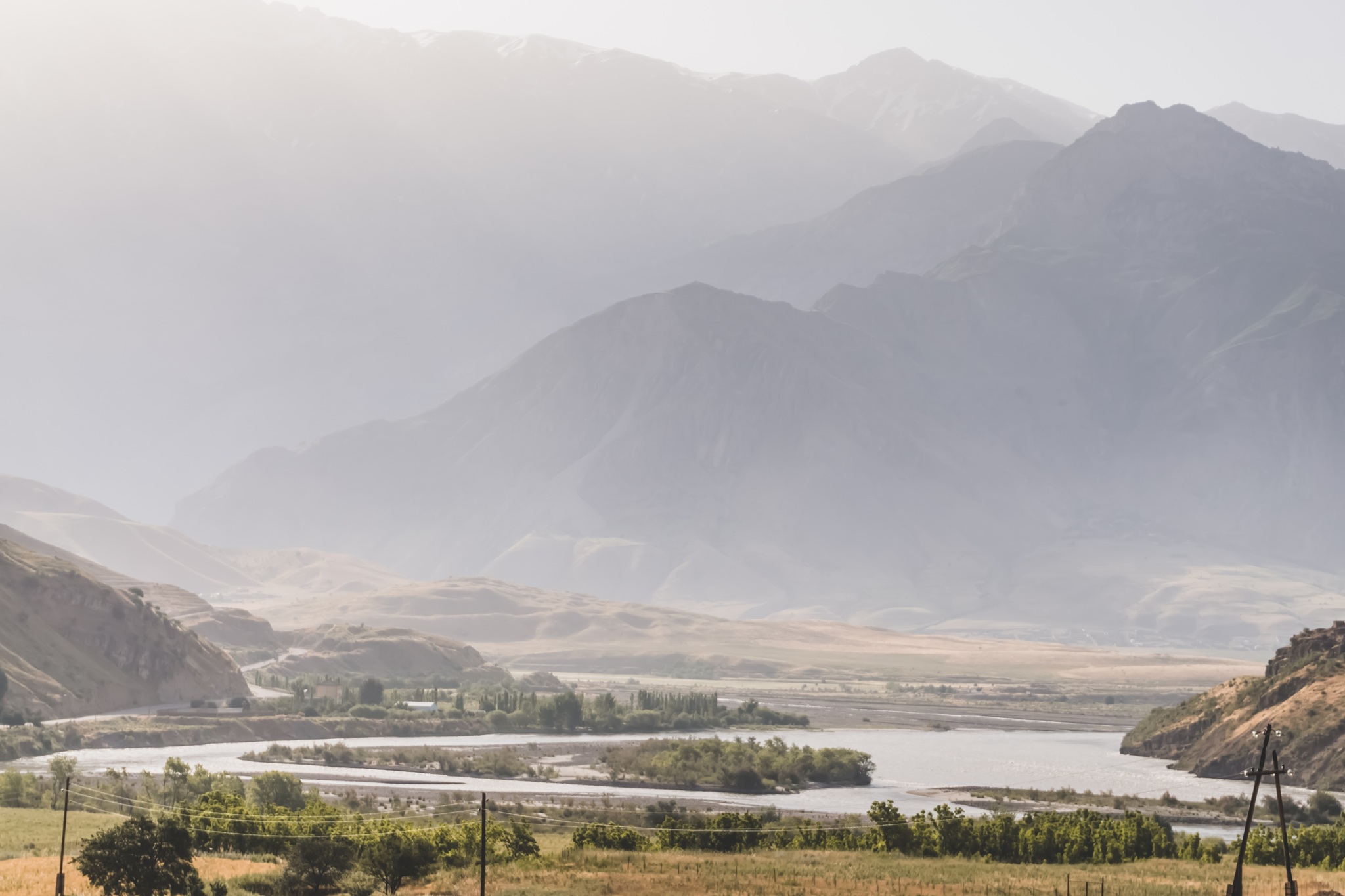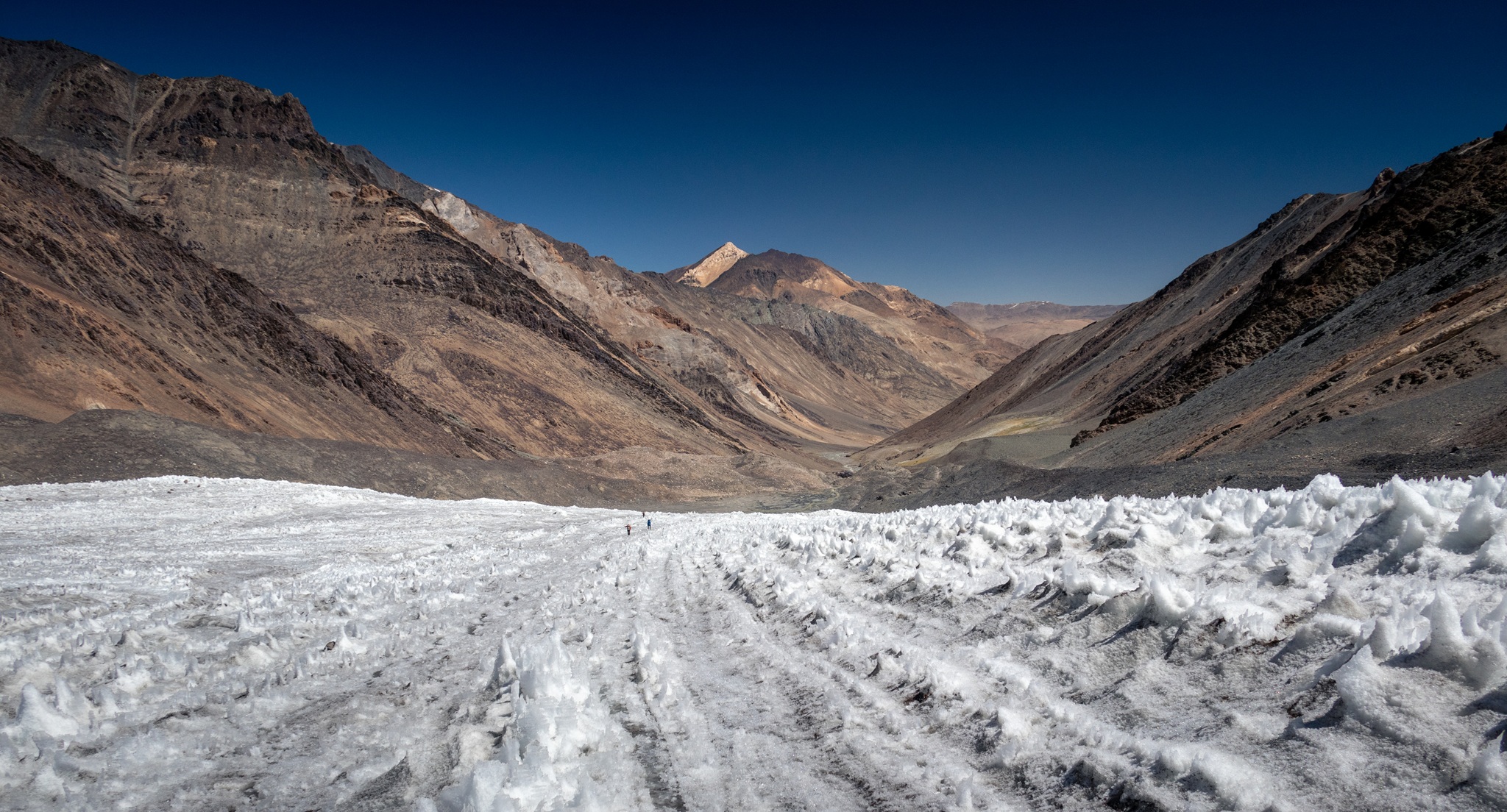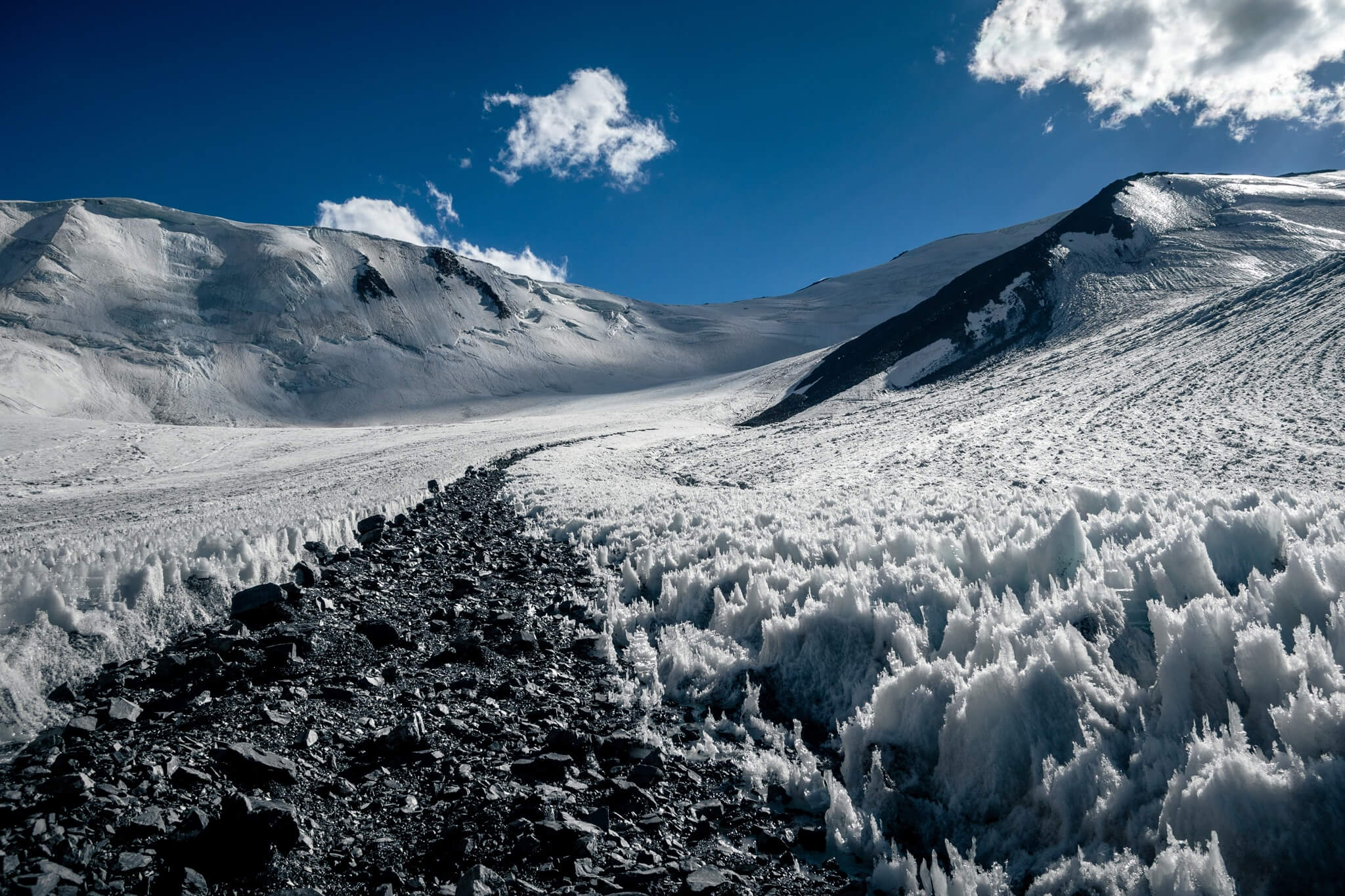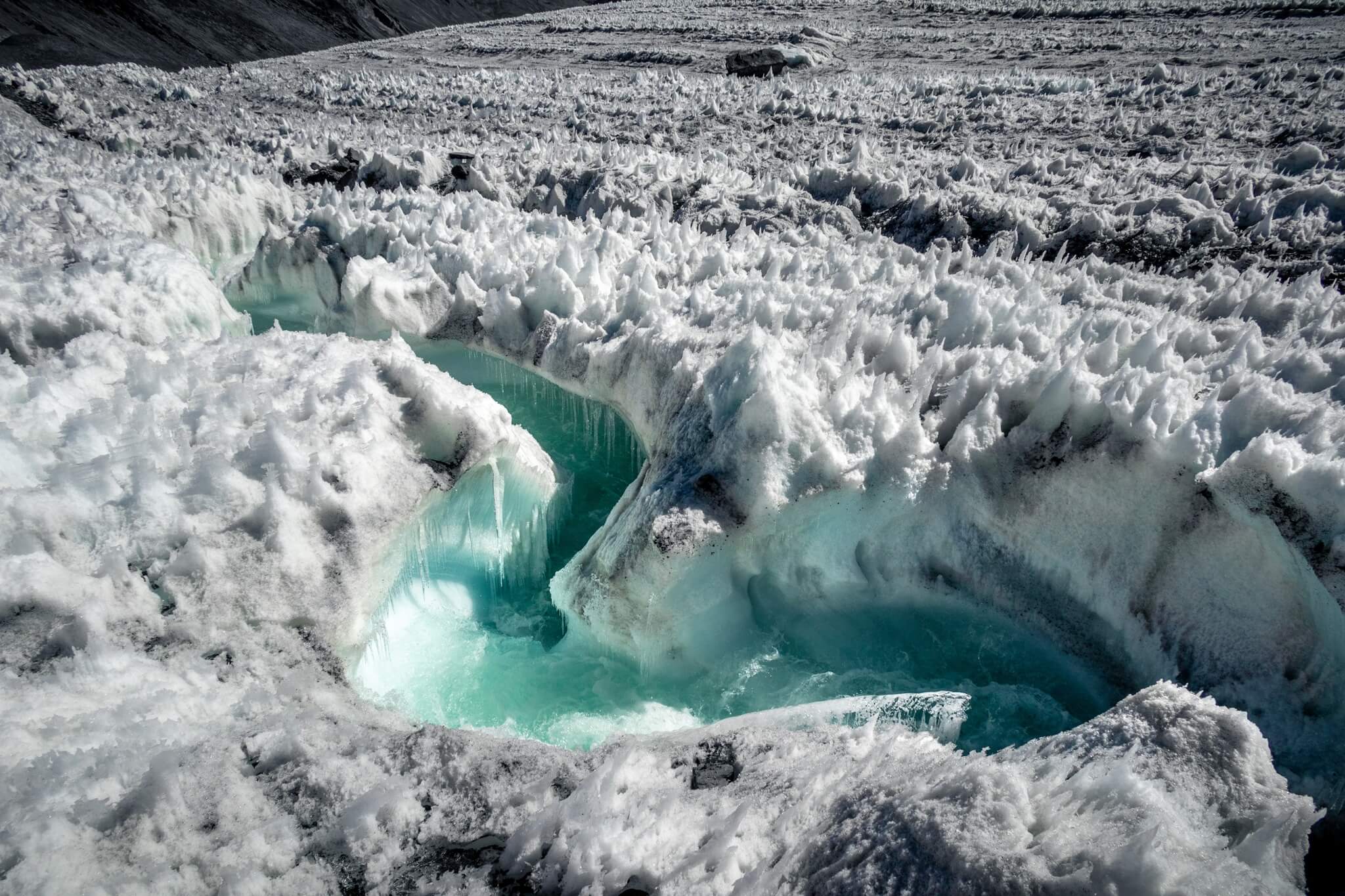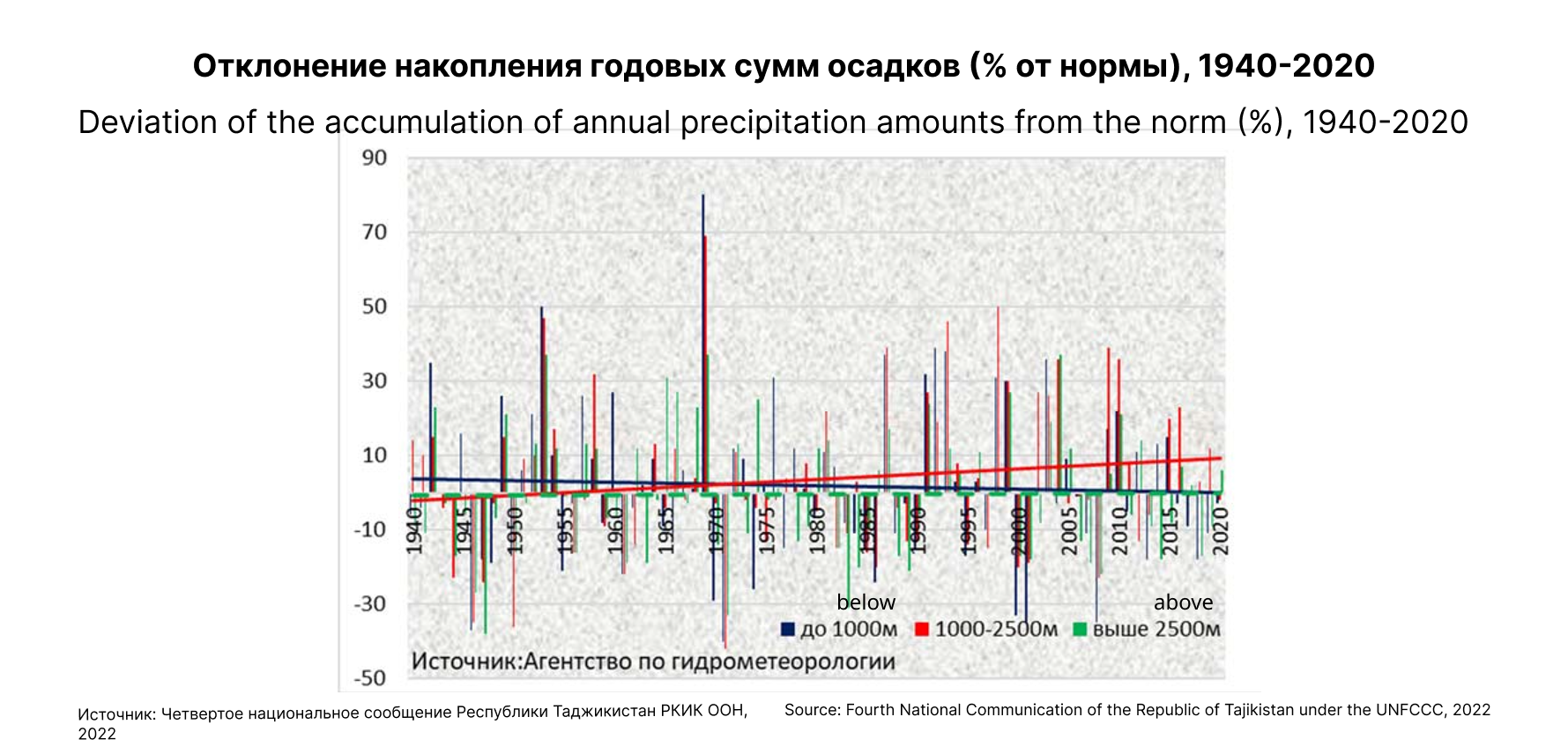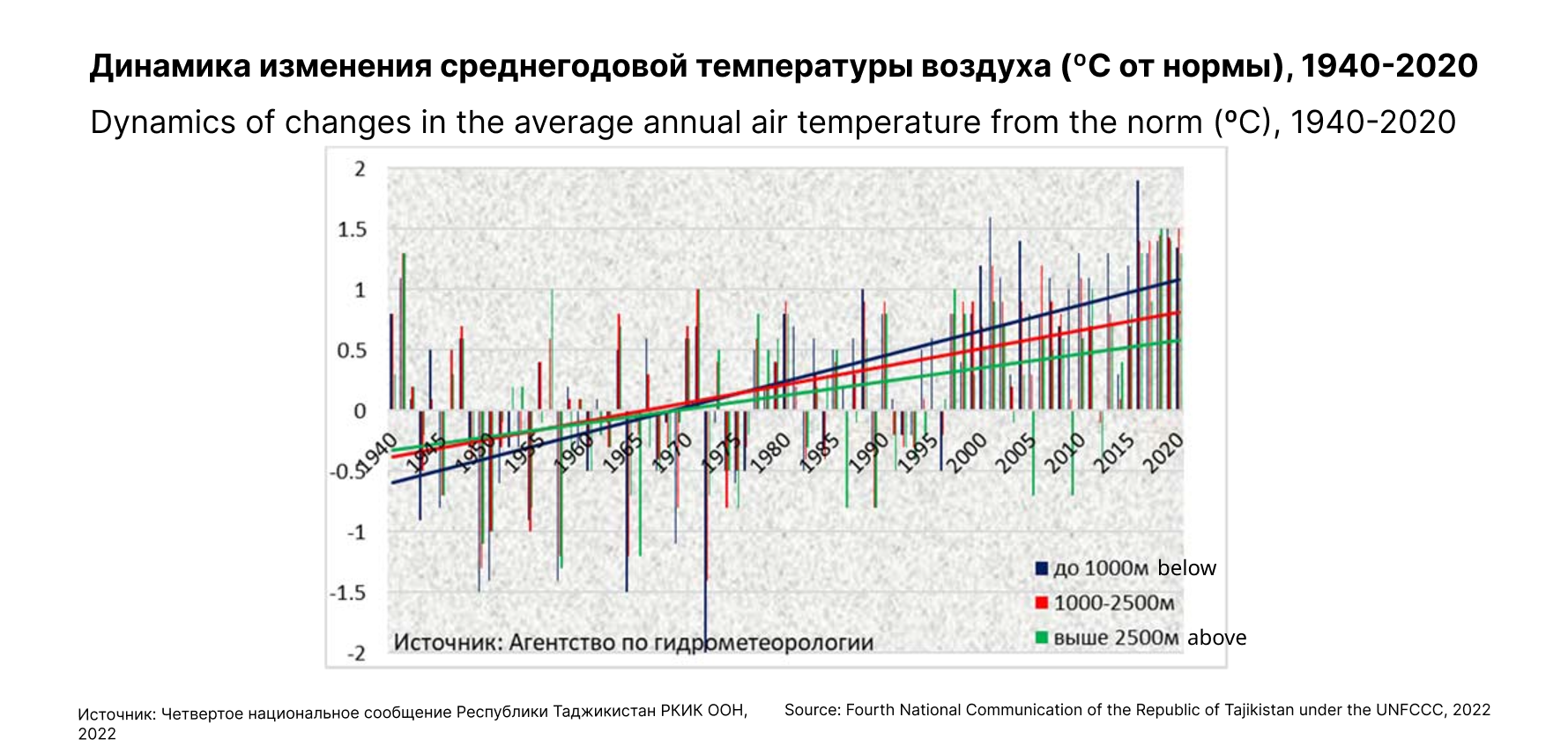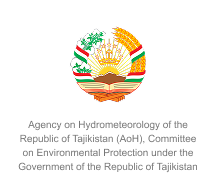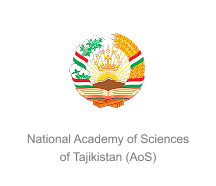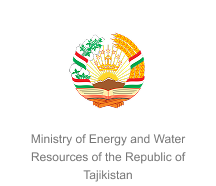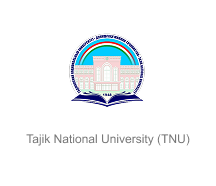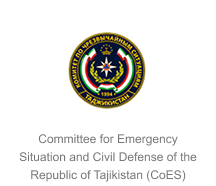Mountain Ice Reservoirs in Changing Climate Conditions
In Tajikistan's high-altitude regions, among the majestic peaks of the Pamir and Gissar-Alai ranges, nature has created a unique cryospheric system. Tajikistan's glaciers cover 11,146 km² — approximately 8% of the entire country's territory, storing 845 km³ of fresh ice. Imagine this: this amount of water would be enough to cover all of Tajikistan with a layer half a meter deep!
These high-altitude ice masses function as natural water reservoirs, feeding local mountain rivers and waterways. Annually, they produce 6–13 km³ of meltwater, providing an important contribution to local hydrology. During dry periods, the role of glacial feeding for local waterways increases significantly.
The Story of Eurasia's Largest Glacier
Among all of Tajikistan's ice giants, the Vanchyokh glacier, better known as the Fedchenko glacier, holds a special place. This is a true champion — 77 kilometers long, it is the largest glacier on the entire Eurasian continent.
But even this giant is subject to natural climate changes. Over the past century, it has retreated 1–1.5 km, losing 2 km³ of ice and 11 km² of area. Today, the glacier continues to retreat at a rate of 15–20 meters each year — as if slowly but steadily moving deeper into the mountains.
Other large glaciers demonstrate similar trends. The Skogach glacier retreated 2.1 km during the period from 1933 to 2020, while domestic glacier systems such as those in the upper Varzob basin have lost 1.34 km² of area and 2.04 km³ of ice volume.
Dynamics of Ice Reserve Melting
Since the 1960s, the melting process has noticeably accelerated. Tajikistan's glaciers lose an average of 0.5–0.7 meters of water equivalent annually. Over recent decades, the total volume of glaciers has decreased by 20–30% — meaning nearly one-third of all the country's ice reserves have disappeared.
To understand the scale of what's happening, imagine a huge ice block as tall as a five-story building that becomes half a meter shorter each year. This is exactly what the losses of each individual glacier look like.
Changes in Snow Cover
Snow in Tajikistan's mountains represents an important seasonal water resource reservoir. Snow cover forms a significant portion of the annual runoff of the country's mountain rivers, particularly critical during spring and early summer months.
In high-altitude areas above 3,000 meters, snow lies for 100–200 days per year, creating a stable water reserve. However, changes are observed at lower elevations: compared to the 1980s, the snow season has shortened by 10–15%.
Particularly noticeable changes are occurring in the Eastern Pamir — an important snow accumulation zone for internal watersheds. Since 2000, this territory has lost 5–10% of its snow-covered area. The snow water equivalent in the Pamir has decreased by 15–20% since the 1980s.
New Lakes — Consequence of Glacial Retreat
Glacial retreat has led to the formation of new mountain lakes. Since 2000, 43 new moraine-dammed lakes have appeared in the Pamir. These water bodies, trapped between rock formations, create picturesque landscapes but represent a potential danger of sudden outburst floods for local settlements and infrastructure.
Hidden Changes in Permafrost Soils
Beneath the surface of Tajikistan's mountains lies another component of the cryosphere — permafrost. It occupies 10–15% of the country's territory, predominantly at elevations above 3,500–4,000 meters.
This underground ice system is also undergoing transformation. The thickness of the permafrost active layer (which thaws in summer) has increased by 20–30 cm since the 1970s. The temperature of permafrost soils is rising by 0.3–0.5°C each decade.
These changes entail serious hydrological consequences:
- Summer runoff in high-altitude watersheds, such as the Varzob and Kofarnihon basins, has changed by 15–20%
- Landslide frequency has increased by 30–40% since 2000
- Turbidity of glacial rivers has grown by 25–50% due to sediment release during thawing
Impact on Water Resources and Economy
Changes in the mountain cryosphere directly affect Tajikistan's economy. Rivers fed by meltwater generate more than 90% of the country's hydropower. Projected changes in runoff may affect energy production by 15–25% by 2050.
Irrigated agriculture also faces challenges. Changes in snow cover affect agricultural production, with potential yield changes of 10–15%. Ski tourism, important for the economy of high-altitude regions, faces challenges due to changing snow season duration.
Ecosystem Changes
Alpine meadows and wetlands dependent on snowmelt have already changed by 20–30% since 1990. Permafrost changes affect the stability of roads, power lines, and hydraulic structures in high-altitude areas.
Climate Projections
Tajikistan's high-altitude regions have experienced temperature increases of 1.5–2.0°C since the 1950s. According to climate projections, an additional temperature increase of 2.5–3.5°C is expected by 2100.
If current trends continue, up to 50% of Tajikistan's glacier volume may be reduced by 2050. By 2100, the summer runoff of local rivers dependent on glaciers may change by 20–30%.
Need for Scientific Monitoring and Adaptation
The study of Tajikistan's cryosphere is important for understanding climate change processes in high-altitude regions. The glaciers of the Pamir and Gissar-Alai serve as indicators of global climate changes and require constant scientific observation.
Understanding ongoing processes is the foundation for developing national adaptation strategies. It is necessary to develop monitoring systems (currently only 12% of the country's glaciers are covered by research), improve water conservation technologies, and prepare for new conditions of internal water resource management.
Modern challenges require a comprehensive scientific approach to studying cryospheric processes and developing sustainable solutions for adaptation to changing climate conditions. National scientific research capabilities in mountain ecosystem studies contribute to better understanding of domestic climate change impacts and support evidence-based policy development.

 Go Back
Go Back